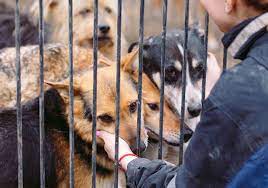As responsible pet owners, we only hope for the best for our furry friends. However, like all humans, dogs are also victims of Dog Allergies, which can bring discomfort and health hazards. Knowing the symptoms of allergies in dogs, therefore, becomes very essential. Here is a comprehensive guide that will keep you updated on the most common dog allergies, their symptoms, causes, and best management strategies so that your canine companion remains healthy and happy.
Table of Contents
ToggleUnderstanding Dog Allergies
A dog allergy is any instance of a dog’s immune system that reacts abnormally to an invading foreign substance, identified as an allergen. This provokes the body’s immune response which may range from mild to serious symptoms. Understanding the most common types of allergies and their symptoms is the first step to taking care of your dog.
Types of Dog Allergies
1. Environmental Allergies (Atopy):
Induced by environmental allergens, the latter include pollen and mold, dust mites, and, grass.
Seen in selected breeds, especially Retrievers and Terriers.
2. Food Allergy:
Dietary items element element-based ingredients, mainly proteins in general, including beef, chicken, and dairy.
Symptoms are abrupt and appear following the presentation of a new diet.
3. Flea Allergy:
– Triggered by flea bites and proteins in flea saliva.
A single flea bite can cause quite severe itching in sensitive dogs.
4. Contact Allergies:
Developed after a dog comes into contact with something such as fabric, chemicals, or plant material.
The symptoms are mainly induced at the region where the exposure occurred.
Genetics
Some dog breeds are more prone to allergies due to their genetic makeup. A few breeds like Bulldogs, Boxers, and Dachshunds tend to be more sensitive toward allergens. Though genetics is the primary reason, other factors like environmental conditions and diet also contribute to the causes of allergies.
Common Signs of Dog Allergies
To get proper treatment, it is very important to detect the signs of dog allergy. Here are some common signs:
1. Itching and Scratching
The most common signs would be that the dog exhibits persistent itching. You may find your dog licking, biting, or scratching at their skin persistently. This might lead to secondary infections and dermatitis unless treated.
2. Red, Inflamed Skin
Allergic reactions tend to manifest with redness and inflammation in the affected parts. The areas around the paws, ears, and belly are most commonly affected. That condition is called dermatitis. It could very well be a very uncomfortable condition for your dog.
3. Ear Infections
Allergies in dogs often are combined with symptoms of ear infections. General signs include shaking of the head, scratching of ears, as well as bad smell coming from the canal. Left untreated, ear infections could serve as a ground for secondary health problems.
4. Sneezing and Nasal Discharge
Just as in the case of humans, dogs can manifest respiratory signs due to environmental allergies. You might find your dog sneezing or even remark on a runny nose or watery eyes.
5. Intestinal Problems
The most common digestive discomfort for pets due to food allergies is vomiting, diarrhea, and gas. If your pet develops these symptoms within the timeframe of consumption, then it is likely suffering from a food allergy.
6. Swelling
Dogs sometimes develop swelling on their face, ears, or paws. This is a condition known as angioedema and should not be ignored and seen by a vet immediately.
Diagnosing Dog Allergies
If you suspect your dog has an allergy, you must visit your veterinarian. A vet often follows this procedure to diagnose allergies in dogs:
1. Medical History
Your vet will ask about the symptoms of your dog, his diet, and everything he has been exposed to in his environment. The more details you share, the better an idea the vet gets of identifying the cause.
2. Physical Examination
In the course of a thorough physical examination, the veterinarian will also come across a chance to check on allergies, which can appear either as skin irritation or ear infection.
3. Testing for Allergies
At times, your veterinarian might advise doing some allergy tests. Two types of tests can be done: blood tests or skin tests. These procedures will reveal some specific allergen causing this allergy in your dog.
Common Causes of Dog Allergies
Knowing which allergens exist can help you prevent and keep your dog healthy.
Environmental Allergens
– Pollen: Tree, grass, and weed pollens are very popular causes of season allergies.
– Mold: All mold spores thrive in damp environments and are classified as an allergen.
– Dust Mites: These small creatures thrive in dust within homes, bedding, and carpets.
Food Allergens
– Proteins: Beef, chicken, dairy, eggs, and fish are all commonly known allergens.
– Grains: Some dogs may also react to grains such as wheat or corn.
– Additives: Artificial colors, flavors, and preservatives can also cause allergic reactions.
Fleas and Other Parasites
– One of the major culprits which causes allergies on the skin of the dog is fleas. It is important to have regular flea control to avoid flea allergies.
Chemicals and Fragrances
– House cleaners, shampoos, and other chemical products can cause allergic reactions in sensitive dogs.
Controlling Dog Allergies
After you have diagnosed the cause of your dog’s allergies, you must control it. Here are some helpful tips that can be used:
1. Dietary Change
If you suspect that your dog is undergoing food allergy, you may switch him over to a hypoallergenic diet. Your veterinarian will also provide you with a recommendation of an elimination diet to identify which food may be causing the problem.
2. Environmental Control
To reduce their exposure to environmental allergens:
– Regularly clean and dust your house.
– Use air purifiers that reduce airborne allergens.
– Reduce outdoor exposure to dogs during peak pollen seasons.
3. Regular Grooming
Bathing and grooming your dog regularly will decrease allergens on the dog’s skin and coat. Use mild, hypoallergenic shampoos to prevent further irritation.
4. Flea Control
Implement an aggressive flea control program. Topical and oral drugs are used for flea prevention. What is most important is to vacuum the house constantly to eliminate flea eggs as well as the flea itself.
5. Medication and Supplements
Your vet can prescribe antihistamines, corticosteroids, or other medications to alleviate symptoms of allergies. Omega-3 fatty acids and other supplements also promote healthy skin.
6. Allergy Shots (Immunotherapy)
In some instances, your vet might recommend immunotherapy, which refers to an allergy shot course. Immunotherapy is a procedure involving a series of shots that work to gradually desensitize your dog to certain allergens.
When to Visit a Veterinarian
Seek immediate veterinary attention if your dog shows significant symptoms such as swelling, or breathing difficulties, or if they keep on vomiting and having the runs for days. This may save problems from becoming serious, thereby improving the quality of life for the dog.
Conclusion
Knowing common dog allergies and their symptoms is very important for any dog owner. Identifying the signs early and carrying out effective management will help one’s dog live a healthier and happier life. For practical advice and treatment suited to your dog’s needs, always refer to your veterinarian.
For more similar info:
https://www.webmd.com › Allergies › Reference
































